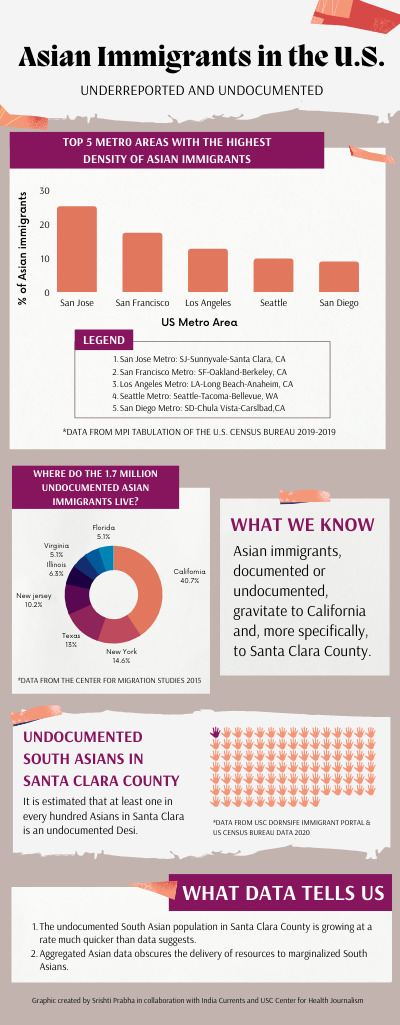Exploring Insights: A Deep Dive into South Asian Caregiving
Welcome to our latest blog post.
In a recent interview, I had the privilege of conversing with Dr. Sumitra Murthy, a leading expert in disability research and family support within the South Asian community. Our conversation was not only enlightening but also deeply insightful, touching upon key themes and challenges faced by caregivers of individuals with intellectual and developmental disabilities.
Throughout the interview, Dr. Murthy shared her wealth of knowledge and expertise, offering valuable perspectives on the nuances of caregiving within the South Asian context. From the importance of cultural sensitivity to the transformative power of mindful walking, each question unearthed a treasure trove of wisdom and understanding.
In this blog post, I aim to capture the essence of our conversation by sharing the questions posed and Dr. Murthy’s illuminating responses. Join me as we unravel the complexities of South Asian caregiving, gaining fresh insights and perspectives along the way.
So, without further ado, let’s dive into the heart of the matter and explore the enlightening discourse on South Asian caregiving with Dr. Sumitra Murthy.
Can you tell us about your journey and what initially sparked your interest in disability research and caregiving?
First of all, I would like to thank you for inviting me to the podcast. About my journey, our family (my husband, my daughter and I) moved to US in late 1990s. I am a physician from India. I did my Bachelor of Medicine & Bachelor of Surgery (also called MBBS) in India. I completed my Masters in Public Health from Northwestern University. I worked at the Department of Disability and Human Development at the University of Illinois at Chicago before I decided to do my PhD in Disability Studies in the same department. My interest in disability studies stems from both personal as well as professional experiences. My sister-in-law s intellectually disabled, and lives with my mother-in-law. She needs assistance with many activities of daily living, communicating and monitoring. My sister-in-law, in spite of having a moderate intellectual disability level, has not been equipped for self-sustenance. I see how caregiving for a disabled child has caused physical, emotional and psychological stress to my mother-in-law, in turn affecting her appraisal and coping methods. I therefore, wanted to pursue PhD in Disability Studies because I knew that it would equip me with the knowledge of complex social and environmental structures and values associated with disability, policies and practices on family support, and understanding of the need for cultural competence in the care of persons with intellectual and developmental disabilities and their families. I believe that the knowledge thus acquired will help in improving the social and health outcomes of the family members as well as the persons with IDD. I would like to focus my research on bridging the gap between research on family support for people with IDD and outreach of the practices and policies to the community.
Can you provide an overview of your research on encouraging South Asian caregivers of individuals with developmental disabilities to engage in mindful walking?
Our research study is called ‘MindWalk’, a mindful walking study for ageing South Asian (Indian, Pakistani, Bangladeshi, Sri Lankan, Nepali, and Bhutanese) caregivers (50 years and above) of individuals with intellectual and developmental disabilities who experience stress. Developmental disability means a severe, chronic disability of an individual that is attributable to a mental or physical impairment or combination of mental and physical impairments, is manifested before the age of 22; and results in substantial functional limitations. Some of the developmental disabilities include conditions such as autism, Down syndrome, cerebral palsy, and Spina bifida. It is a 12-week mindful walking intervention that combines cognitive training (which is mindfulness) with physical activity (which is walking). Every week, the participants will learn about mindful walking techniques by watching learning modules online and practice it. We will provide the participants with fitbits and an activity logbook so that they can record their step count, distance covered and describe their overall mindful walking experience. We will also send the participants motivational texts and call them once every week to understand their overall experience with mindful walking. This is a randomized control study, which means that we will randomly assign participants to either receive the intervention or not. Those who do not receive the intervention are called the control group. The control group will receive some materials on benefits of walking. They will receive the training modules after the end of the study. This helps to ensure that any differences observed between the two groups are due to the intervention itself, and not other factors. It’s like a fair way to test if the intervention really works.
What inspired you to focus on this specific demographic and topic for your research?
Family caregivers of people with intellectual and developmental disabilities (IDD) experience high levels of stress which can result in their cognitive decline such as not thinking clearly, not remembering things, and not able to make good decisions. Caregivers often forget to take care of themselves and schedule time for maintaining their physical and mental well-being. In addition to performing their caregiving duties, South Asian caregivers, in particular, face additional challenges due to lack of access to services, cultural and linguistic barriers, stigma, and discrimination. Due to all these, the South Asian family caregivers experience elevated psychological stress that negatively impacts their overall well-being. To address this, we planned to conduct this research study. Research studies have shown that combining both physical activity and cognitive training, such as dancing, martial arts, yoga and mindful walking have led to great improvements in cognitive function. One of these combined interventions, mindful walking, is a technique to learn to be more present and focused on the here and now while engaged in the physical activity of walking.
What are some of the unique challenges that South Asian caregivers of individuals with intellectual and developmental disabilities face regarding physical activity and exercise?
South Asians, in general, have a higher risk of developing conditions such as diabetes and cardiovascular diseases. Unhealthy dietary habits and physical inactivity coupled with genetic predisposition seem to contribute to this higher risk. Physical activities such as walking, participating in sports and recreational activity is seen to be lower among South Asians in comparison with the general population. For South Asian caregivers, in particular, caregiving responsibilities may limit the time available for them to engage in physical activity, in particularly leisure time physical activities. Several studies reported that South Asian women were less physically active compared to their male counterparts. Additionally, women do not engage in certain types of physical activity because of certain cultural expectations in some religious and ethnic groups. Moreover, because of caregivers’ limited access to support services for themselves and their family members with intellectual and developmental disability due to factors such as cultural and linguistic barriers, South Asian caregivers end up taking up more caregiving responsibilities and therefore experience elevated stress and mental pressure, thereby neglecting to take care of their own health and well-being. Another challenge that South Asian caregivers face is low awareness and education on the benefits of physical activity and mindfulness practices in improving their physical and mental health. They generally have a lower health literacy compared to the general populations, because of cultural and linguistic barriers and limited access to educational materials.
How do cultural factors influence the attitudes and behaviors of South Asian caregivers towards mindfulness and physical activity for themselves and those they care for?
Some of the cultural factors and beliefs that influence the attitudes and behaviors of South Asians, in general, with lifestyle and behavior changes, are: gender roles, physical activity misconceptions, and cultural priorities. As I mentioned before, men and women usually have distinct roles in a South Asian family structure. Expectations from women in the South Asian household often prevent them from starting an exercise regimen or any new lifestyle or behavior change program. Although it is changing, traditionally, South Asian culture has emphasized physical distancing between men and women. Therefore, when it comes to physical activity, many women only feel comfortable in women-specific groups and feel that it is culturally inappropriate to exercise around men. Another cultural aspect that I mentioned earlier was about misconceptions about physical activity among South Asians because of lack of awareness. Some of these misconceptions are: anxiety concerning breathlessness and rapid heart rate as something abnormal and thus feeling discouraged to do exercise. Lack of proficiency in English may deter them from seeking assistance and knowledge about physical activity. Additionally, social priorities among South Asians make them to deprioritize exercise and other practices such as mindfulness as part of their daily routine. A common cultural belief is that time outside of work should not be spent on ‘leisure’ activities for oneself such as exercising, but instead should be used to help or care for or spend time with family members. South Asians, thus, sacrifice health and physical activity for one’s work or family. Also, South Asians are involved in daily religious and spiritual practices, and practice alternative medicine practices, and therefore seem to find less need for other lifestyle changing practices such as physical activity or westernized mindfulness practices.
How do you navigate cultural sensitivity and adapt interventions to be culturally appropriate for South Asian communities?
Navigating cultural sensitivity and adapting interventions to be culturally appropriate for South Asian communities requires a thoughtful and nuanced approach. It is important to take the time to understand the cultural values, beliefs, and practices of South Asian communities, respect them, and incorporate them into interventions. Since South Asian culture is collectivistic and family-centric, and spirituality being the underlying fabric of cultural life, use of traditional spiritual and healing practices, community support networks, and family-centered approaches should be encouraged. To do so, it’s important to conduct needs assessments of the specific population, and engage with community members and community leaders before adapting interventions to South Asian communities. Some ways of community engagement include setting up advisory boards constituting the community members and leaders and, conducting listening sessions and focus groups with South Asian stakeholders. Next, it’s important to provide relevant research and resource materials in appropriate South Asian languages, if needed. Also, culturally appropriate language and communication styles need to be used. If the materials are in English, plain language must be used. Outreach and dissemination of interventions need to be tailored to cultural values and priorities, for example culturally relevant imagery and narratives need to be incorporated. Most important of all, staff members involved in delivering interventions should be culturally competent and sensitive to the needs of the South Asian community. Staff members should be provided cultural competency training and cultural humility training so that their understanding and responsiveness to cultural aspects of South Asians is enhanced. And finally, feedback from participants, community members, and stakeholders need to be sought to assess cultural appropriateness, effectiveness, and impact within the South Asian community and to identify areas for improvement and adaptation.
What are some key areas where healthcare and support services can better serve South Asian caregivers and individuals with intellectual and developmental disabilities?
Many of the ways to navigate cultural sensitivity while adapting interventions are also applicable to improve the healthcare and support services for South Asian caregivers and their family members with intellectual and developmental disabilities. Some of the major difficulties that South Asian caregivers face are: understanding health-related information because of limited English proficiency, managing healthcare tasks such as managing medications or coordinating care or services, and language and cultural barriers when talking with providers. To address these, there is a need for culturally and linguistically competent services and resources for South Asian caregivers, such as making information available in the caregivers’ language, training the providers to be culturally sensitive and avoid assumptions about a family’s cultural practices and beliefs, using professional interpreters, including families in decision-making, and providing culturally competent referrals and resources to resolve issues because of cultural and linguistic barriers. Next, healthcare and other service providers must work with the social and cultural framework of South Asian families, either by involving cultural experts and/or by creating partnerships with South Asian serving community based organizations who have a working knowledge of different South Asian communities, so that services can be delivered through liaising with such organizations. Additionally, service providers need to connect South Asian caregivers and their family members with intellectual and developmental disabilities to advocates from their own communities and also help create or encourage them to be part of support groups.
Can you discuss any future directions or goals for your research in this area?
We hope that the mindful walking intervention will reduce caregivers’ stress, improve their cognitive function, increase their physical activity and enhance their self-efficacy. The Mindful Walking intervention can be implemented easily and is user-friendly because it uses simple elements and technologies. Because of these reasons, we are sure that the intervention would be accepted easily by all the relevant stakeholders and can be conducted with caregivers with diverse demographic profiles. Also, my future goals are to conduct more culturally tailored, innovative intervention studies to improve the lives of caregivers of people with intellectual and developmental disabilities by improving their physical and mental health, and overall well-being.
How do you envision the broader impact of your research on improving the lives of South Asian caregivers and individuals with developmental disabilities?
Because South Asian family caregivers experience elevated psychological stress due to factors such as lack of access to services, cultural and linguistic barriers, and stigma and discrimination, in addition to caregiving responsibilities, the findings from the proposed project would be able to contribute significantly to improving the lives and well-being of older under researched and underserved populations living in the U.S. We are hoping that findings from this pilot project will provide evidence-based data to support larger scale study proposals. We plan to disseminate the findings to a broader audience through conferences and publications and also plan for outreach strategies to organizations serving the target population so that they can incorporate mindful walking trainings as part of their programs. Additionally, our research can help increase awareness and understanding of the challenges faced by South Asian caregivers of individuals with intellectual and developmental disabilities within the broader community. I am hoping that this is just a beginning to conducting more research to improve the lives of families of individuals with intellectual and developmental disabilities.










